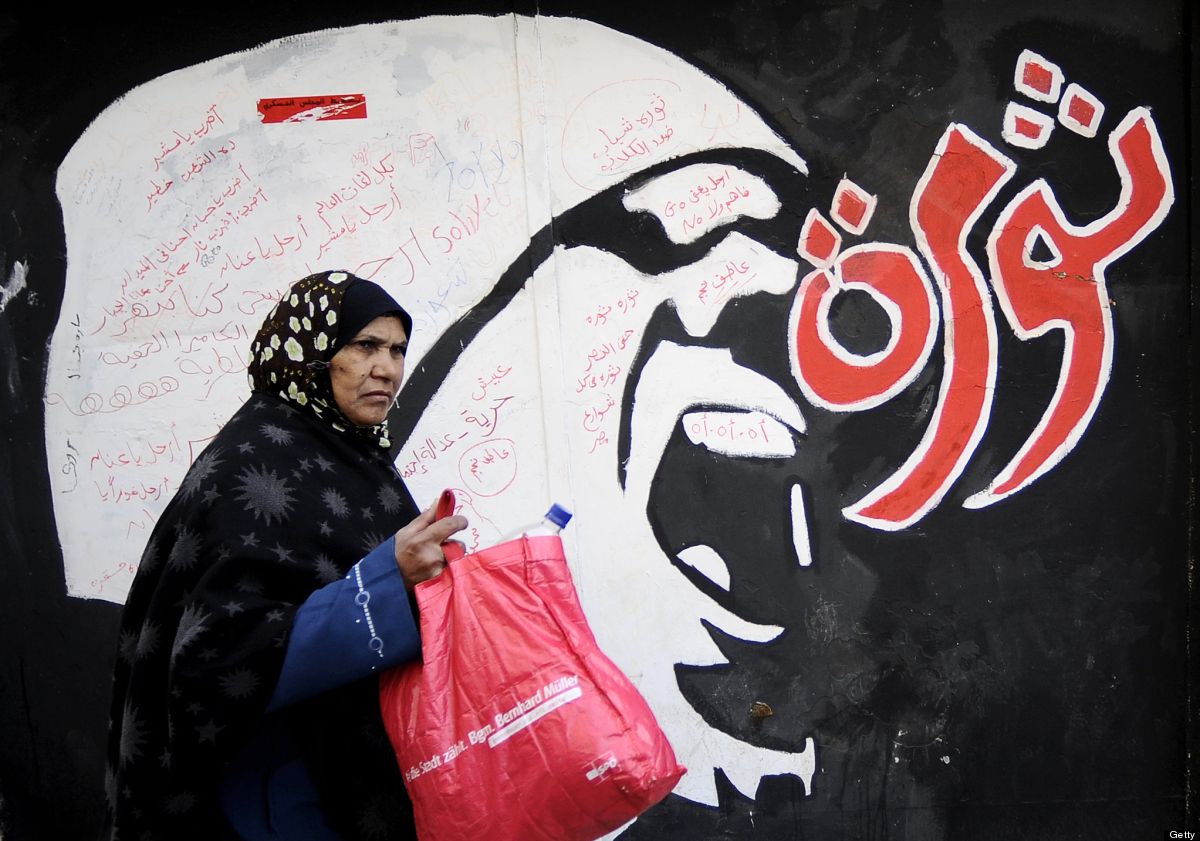
This publication has benefited from the support of the Rosa Luxemburg Foundation. This text may be reproduced in part or in full, provided the source is acknowledged.
The state of the left in Egypt cannot be viewed in isolation from the state of the left in the whole world. It is – so to speak - a state of a protracted crisis whose first indications could be detected in the students’ movement of 1968, and continued after more than two decades since the revisions of the collapse of the Soviet Union. The manifestations of this crisis in Egypt, as well as in the Arab region as a whole, demonstrated the rise and domination of political Islam as the most popular party in the opposition and as an alternative to the regimes that have been in place for several decades before the 2011 revolutions came to completely expose them and reveal the depth of the crisis. While an overwhelming number of people took to the streets with demands and slogans that expressed the very core of the left's project, such as “bread, freedom, and social justice!", the Egyptian left was not only unable to fight for power, but it was also ineffectual in scoring points in favor of its intellectual predominance or the expansion of its organizational base.
Once again, this was not the case of the Egyptian left alone, but also of the Arab and international left. In all the Arab countries that witnessed the wave of revolutions, the conflict eventually turned out to be between the two poles of the political Islam on the one hand, and the existing regimes on the other. Otherwise, globally, the alternative was the rise of right-wing populist currents.
These phenomena cannot be viewed as separate cases, and one cannot be satisfied with the easy and comfortable answers, such as the rhetoric that says that the political Islam does not threaten global capitalism nor the core of the existing regimes, which is why it was allowed to build a grassroots base, while the left was suppressed. One must also question the idea that the message of political Islam in the Arab and Egyptian cases, just like the rightist currents in Europe, plays on the primitive feelings of the masses, and that for this reason, it has a larger popular base or the financial capabilities that allow it to buy the political loyalty of wide segments of society... All these reasons, while true, are not enough to understand the depth of a decades-old crisis.
There are more generic answers that attribute the crisis of the left in Egypt and in the world to the collapse of the Soviet Union and the association made between the "left" with the totalitarian regimes, considering the American propaganda in this direction, and finally the inability of the left to link between class struggle and other identity-based conflicts. By extending this line of reasoning, the logical conclusion would be “the death of the left”, while other considerations turn into mere attempts to revive what must be buried.
Egypt’s Dilemmas
29-03-2015
The truth is also that – regardless of the nametags-, what represents the heart of the left and the reason for its existence in a dynamic way, is demanding justice in its radical form on the one hand, and on the other hand, the crisis of global capitalism, which represents the basis of the left’s theoretical understanding. Those two issues were the main driving forces of the wave of popular movements, whether it was the "Occupy Wall Street" movement or the Arab revolutions. Hence, we are facing the following dilemma: there is a regime that is imploding in one sense or the other; it is at least cracked, both on the level of the system of governance - as in the case of the Egyptian revolution, or as a capitalism in global crisis, whose most recent manifestation was the financial crisis of 2008. There are millions of people now demanding that which is - by definition, at least partly – the “leftist” demand of social justice. On the other side, the right, in its most severe forms of degradation, is on the rise. I do not claim to have answers to this dilemma, but perhaps we should consider a set of trends simultaneously and in a more complex way, away from the easy and comfortable answers.
The relationship to power: The national liberation complex
In Egypt, as in many countries of the global south, the left’s relationship to power was formed - or rather was distorted - through the question of national liberation. The army in Egypt was - and still is - the real pillar of the post-occupation state that the 1952 regime represented. This identification not only represents a focal point for the old left embodied by the National Progressive Unionist Party (El Tagammu’ Party) and its extensions, but it still casts its shadow over the entire leftist movement after more than sixty years. The military nationalist character, with its rhetoric and choices, remains an integral part of a wide sector that calls itself a progressive left. Here, we find the discourse of “preserving the state” strongly present, not only during the first months after the revolution, but also in supporting the military regime when the counter-revolution rose in 2013. The 1960s saw a similar precedent case when the left had expressed its support of Abdel Nasser’s regime from within the prisons. This position in some way extended till 2013, as a large portion of the left continued to support the military regime aiming to preserve the state that represents the symbol of national liberation in their perspective.
The fight for power in Egypt since the first months of 2011 had crystallized and materialized in the form of a battle between the two most powerful poles in the Egyptian political system: the state wings on one hand and groups of political Islam on the other. This conflict has cast a shadow over the Egyptian left as a whole, until it became the main point through which its formations define themselves and their differences.
The conflict over women's headscarves and the Copts' assumption of positions of authority took the left at a moment of the revolutionary tide to a space of discussion far from being engaged with the concerns and questions of the wider audience about women's security in transportation, for instance, or the double discrimination that the poor Copts suffer from.
This does not deny the existence of another segment of the new left represented by the Revolutionary Socialist Movement and the Bread and Freedom Party, in addition to other youth movements. This segment has rejected the identification with the regime, and its discourses clearly distinguished between the bias for national independence and the support for the military regime. However, this position was difficult to express because the fight for power in Egypt since the first months of 2011 had crystallized and materialized in the form of a battle between the two most powerful poles in the Egyptian political system: the state wings on one hand and groups of political Islam on the other.
The relationship with political Islam
This conflict has cast a shadow over the Egyptian left as a whole, in all its different formations, until it became the main point through which the formations could define themselves and their differences. However, this wasn’t the starting point of the argument, because at least since the 1990s, the position on political Islam and what it represents in the political conflict has constituted a seminal distinction between the various formations of the left: Are the groups of political Islam fascist forces or just reformist forces with reactionary tendencies? But, after 2011, the dominance of this debate over the choices and tactics of the various leftist groups rendered different repercussions. In the nineties and until the middle of the first decade of the new millennium, the outcomes of this choice were either to support the state in its war against groups of political Islam and to provide a kind of legitimization for the dictatorial practices (electoral fraud and human rights violations), or to criticize and expose these practices even if the leftist group stands against these Islamic groups in question.
However, with the emergence of the movements of change during the 2005 presidential elections, the disagreement over what political Islam is and its position in the maps of political conflict has become a determining factor for political alliances and their practical interpretations on the ground. Then came the revolutionary wave in 2011 to reinforce these differences and take them to a new direction. Defining who the “true leftist” is became essentially related to the stance on political Islam, and the debate over personal rights became less related to their place within the framework of the class struggle and their linkage with economic and social rights. Rather, personal rights were debated and formulated separately from these contexts, from a liberal standpoint, as though it was a battlefield with the groups of political Islam. The question of women's freedoms or the status of religious minorities, for example, were reduced to a theoretical / rhetorical battle over the headscarf and the Copts' assumption of positions of authority.
Though important, these questions and debates took the left at a moment of the revolutionary tide - which could have been a chance to possibly expand its popular base, at least - to a space of discussion far from being engaged with the concerns and questions of the wider audience about women's security in transportation, for instance, or the double discrimination that the poor Copt people suffer.
A rupture still exists between the consensus over the shortcomings of the left and the failure to take action in the direction of addressing these shortcomings. The programs of the various parties and configurations of the Egyptian left are still either based on identifying the deficiency of neoliberal policies or advocating something similar to central state economies that used to be prevalent in the sixties of the twentieth century.
The problem lied not in engaging in the debate with the ideas of political Islam nor with the attempt to expose its reactionary ideology. Rather, the problem was limiting this discussion in the range that is far from the concerns and problems of the general masses who benefited from the revolution, and in placing this political faction in a defensive position through posing questions that are difficult to answer: What happens after all the women are veiled and after the building of new churches is prohibited? How do we tackle the problems of education, health and wealth distribution? Perhaps the left’s tendency to score points at the expense of formulating a broader political discourse, stems from the fact that the left itself does not own detailed or pragmatic answers to these questions that go beyond generalizations and towards a better understanding of the nature of the moment.
The Egyptian left, however, is not unique in all this, but rather shares with its counterparts all over the world the same predicament, perhaps since the late 1970s. Although there is much criticism from within Marxism for the experience of the Eastern Bloc, and despite attempts to jump over “economicism” - that is economic and historical determinism - and the theories explaining the neoliberal stage in the global capitalist system, these theoretical frameworks still lack the answer to the question of “what next?”, or in Lenin’s words, “What is to be done?” Perhaps that is why the easiest thing to do was to define the “real left” by its stance on political Islam rather than through its suggested political alternatives and projects, and not just the slogans it raises.
Building on the points of intersections
Before the revolutionary wave of 2011, the Egyptian left was already attempting to build new dynamics, and those attempt were no less serious after 2011. It went in the direction of building unifying fronts between different organizations like the “Alliance of the Left”, and even creating a new broad leftist party (“The Socialist Popular Alliance Party”) on the background of the revolution. The various leftist formations and the individuals who belonged to this ideology in an unorganized way did not, at any time, deny the importance of linking the economically driven demands and movements to the political demands, nor did they deny the importance of creating a practical political program that answers current questions, or the centrality of translating the revolutionary slogans into public policies and finding new organizational forms. Still, a dissociative rupture exists between the consensus on the shortcomings of the left and the failure to take action in the direction of addressing these shortcomings.
Perhaps the left’s tendency to score points at the expense of formulating a broader political discourse, stems from the fact that the left itself does not own detailed or pragmatic answers to these questions that go beyond generalizations and towards better understanding of the nature of the moment. It was easier to define the “true left” by the stance on political Islam rather than by the alternative political projects it suggests.
For instance, on the morn of the revolution, there was a unanimous agreement regarding the importance of building a left-wing party that is broader than the small organizations and underground ones; a party very far from “El Tagammu’ Party” (The National Progressive Unionist Party) with its relations with the authorities and its absence from every popular demand movement prior to the revolution. However, the strange thing was that this consensus about building an alternative party soon turned into a reproduction of the same old dynamics that governed previous experiences. Drowning in the details of how to integrate the existing left-wing entities within the framework of a new party, looking at the presidential elections as a mere ideological rivalry with Islamists rather than a battle to win the support of the masses or building the party or even competing in the presidential battle itself… all these were reasons why the two leftist candidates ended up last in the polls.
What Has Remained of the Left in Algeria?
06-03-2020
On the theoretical level and as far the agenda is concerned, despite the serious attempts to formulate policies beyond the slogans, the absence of the left from power and its inability to even compete for power have rendered the left’s incapability to place its agendas on track. The programs of the various parties and configurations of the Egyptian left are still either based on identifying the deficiency of neoliberal policies or advocating something similar to central state economies that used to be prevalent in the sixties of the twentieth century.
What is to be done?
Considering these various dilemmas, it appears that the new left, in Egypt as well as in the world, must engage in two seemingly contradictory tasks: the first is to revive a part of its heritage, without any shame or equivocation, and the second is admitting that its answers are inadequate, and that what it has now is nothing but the tools it needs to use in order to find answers. At the organizational level, for instance, the most successful example in Egypt in the past fifty years is still the Muslim Brotherhood, which adopted an essentially Leninist organizational form. Despite this, just mentioning the Leninist model of organization in the leftist circles - even in the most radical of these circles - has become cause for either ridicule or indignation. Though, what is required is not reconstructing the Leninist organizational structures of the 1920s, but summoning whatever can be useful from their core and essence, in a way that suits the current stage and its tools, whether by replacing the party’s newspaper with a Facebook group, or by finding ways to ensure that centralism does not overwhelm democracy as a mode of decision-making.
The left must define itself not by its opposing position against the Islamists (though this is an important part of the ideological war), but as a stand-alone political project in a moment that much resembles the vicissitudes of the first half of the twentieth century, with its wars, the rise of the fascist right, and waves of displacement across continents.
On the other hand, for a distorted economic system such as the Egyptian one - that has neither undergone the developments of industrial capitalism (or what came after), nor became part of a system of digital capitalism -, attempts to understand the economy through the oversimplified theorizing of post-industrial capitalism will not be able to produce sufficient answers for a political project. The concept of uneven and interdependent development and the concept of surplus value and class exploitation can all be important points of entry, but they have become mere tools for understanding the nature of an economy and a class stratification in which even the nature of the work itself has been modified. Therefore, these concepts cannot be relied upon to provide answers or immediate alternatives.
The Realities of the “Left” in Morocco
01-03-2020
Finally, perhaps the left should have taken a few steps back to reconsider all the space occupied by the efforts and debates over political Islam, and then tilt the balance in favor of the side that focuses on defining what the left currently is. It should define itself not by its opposition against the Islamists (though this is an important part of the ideological war), but as a stand-alone political project in a moment that much resembles the vicissitudes of the first half of the twentieth century, with its wars, the rise of the fascist right, and waves of displacement across continents.
The content of this publication is the sole responsibility of Assafir Al-Arabi and Rosa Luxemburg Foundation cannot accept any liability for it.
Translated from Arabic by Sabah Jalloul
Published in Assafir Al-Arabi on 17/12/2018




